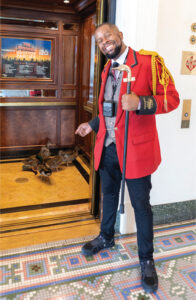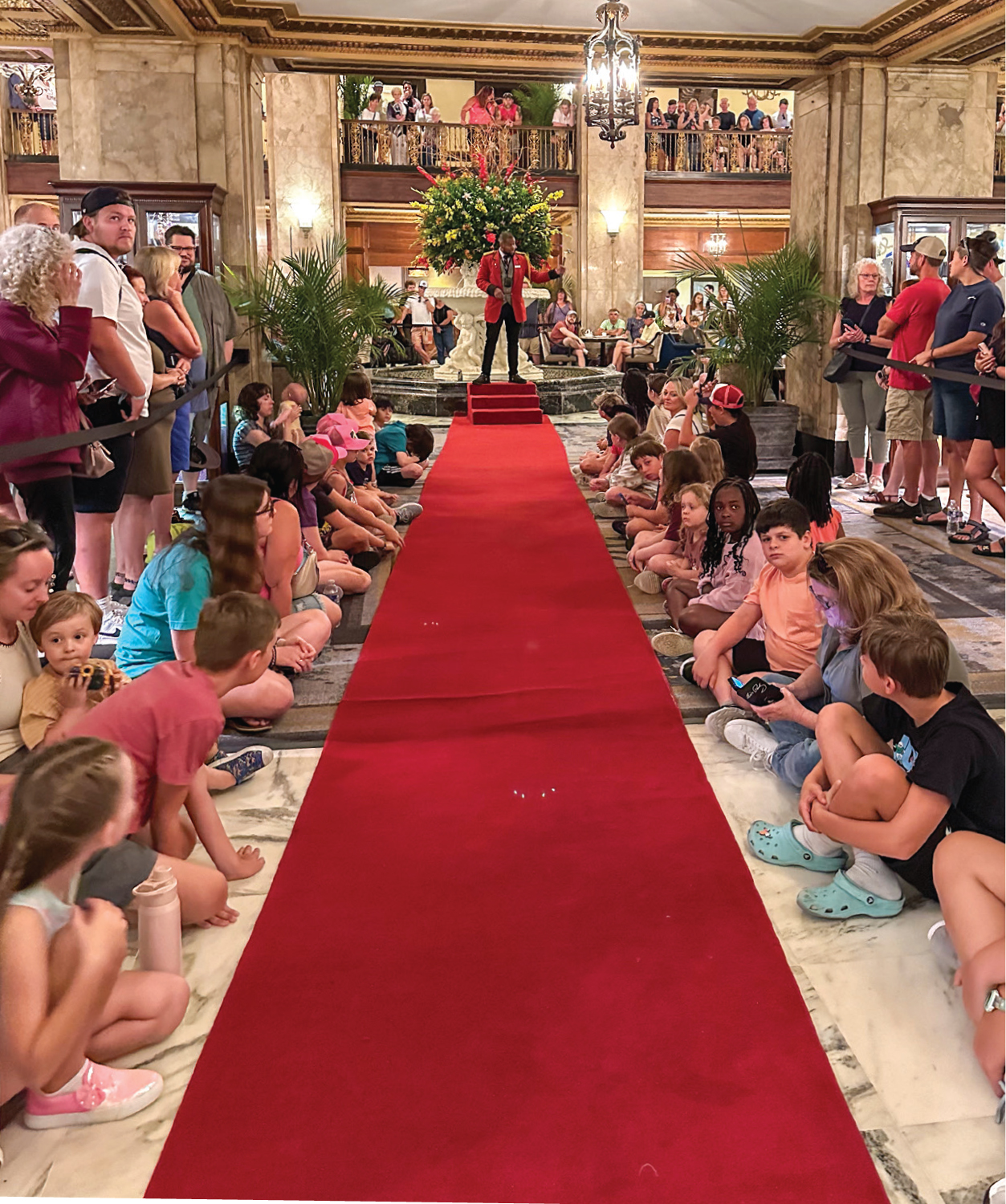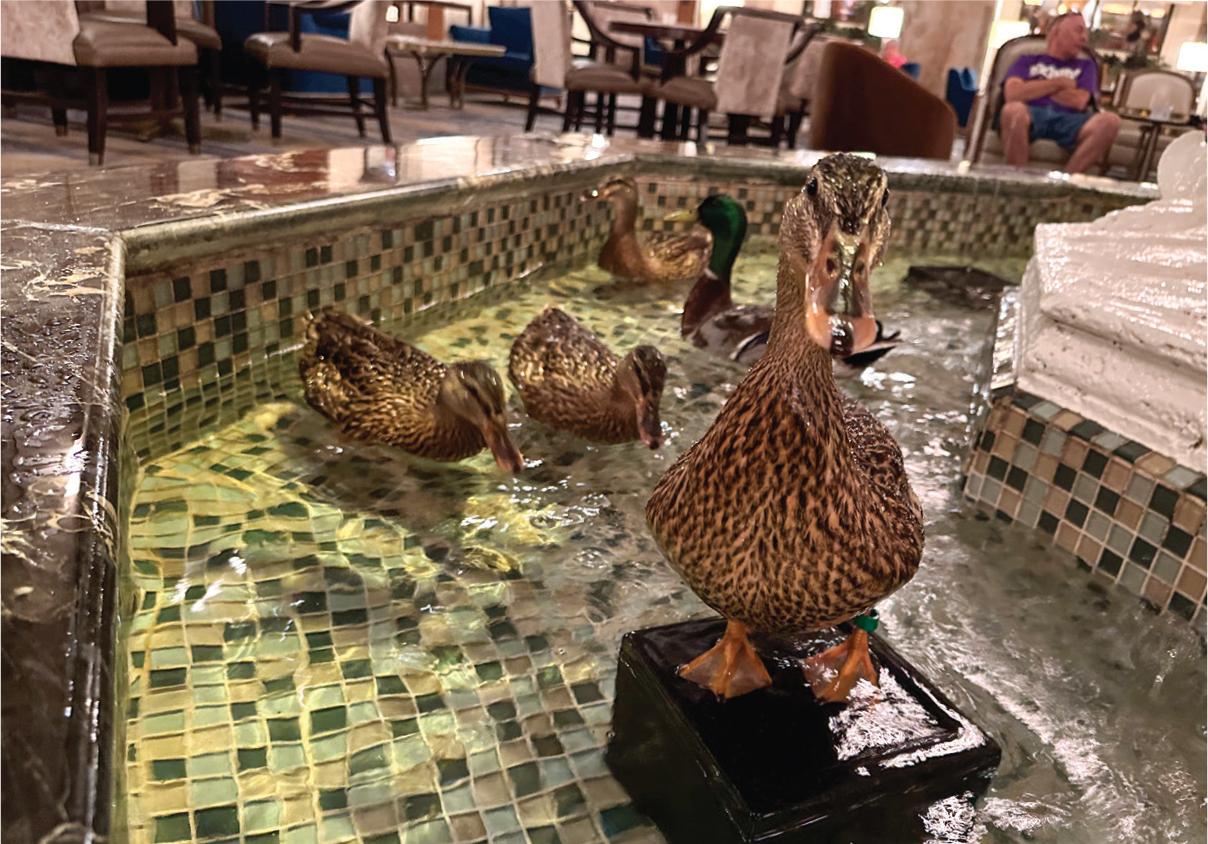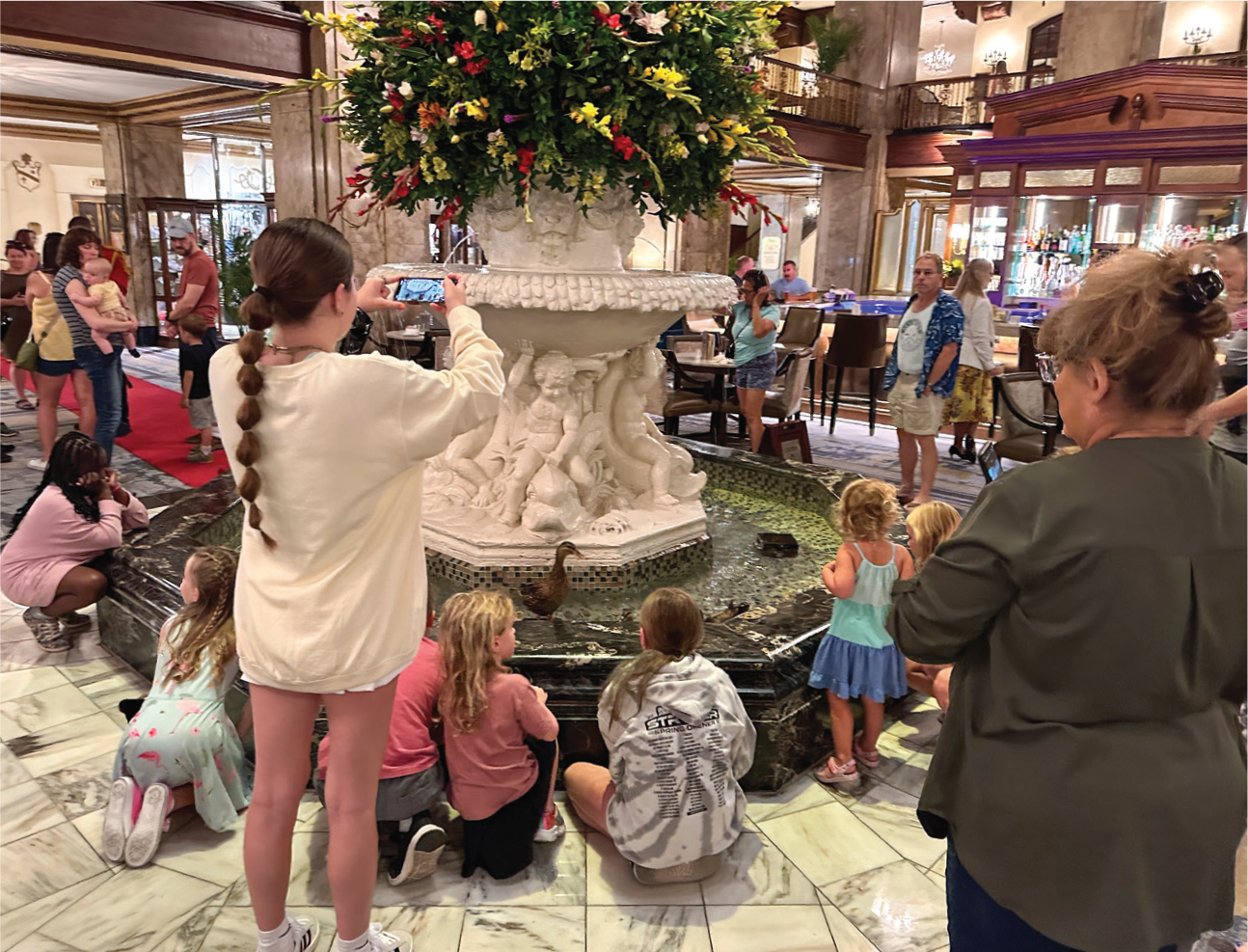
The Peabody Memphis is an experience to behold, especially for lovers of Southern charm, hospitality and grandeur. Located at the corner of Union Avenue and South Second Street, the historic hotel has been a fixture downtown since 1869.
Earning the moniker “the South’s Grand Hotel,” every detail — from the professional staff to the central location to the well-appointed accommodations — makes a stay at this four-star hotel unforgettable. But there’s something else you don’t want to miss that makes the Peabody experience unique: its world-famous mascots — the Peabody Ducks.
Hundreds of visitors gather in the hotel’s grand lobby each week to witness the Peabody Duck March. Hotel visitors and guests gather twice daily and jockey for the best positions around the Peabody fountain in the grand lobby and on the mezzanine level to witness the morning arrival and afternoon departure of the five world-famous mallards.
Led by the Duckmaster, the festivities begin promptly at 11 a.m. and again at 5 p.m. with an introduction and a little history about the ducks and how this tradition came to be.
“My name is Kenon Walker. I am the Duckmaster here at the Peabody. I just want to personally and officially welcome everybody, not just to the Peabody, but also to this morning’s Duck March ceremony,” Walker says as he addresses an audience of about 150. “Thank you all so much for showing up. I appreciate every single one of you.”
Decked out in his official Duckmaster red jacket with gold trim, Walker quickly commands the attention of everyone in the crowd. Every day this ceremony brings people together of all ages, nationalities and walks of life, and it brings smiles to everyone’s faces, according to Walker.

Explaining that this tradition began nearly a century ago in the 1930s as a practical joke amongst friends, Walker quickly has the crowd laughing as they listen to his storytelling.
“It all began with the general manager at that time, a man by the name of Frank Schutt, and his good friend, Chip Barwick,” says Walker. “These two gentlemen decided to go on a duck hunt over in Arkansas in the middle of the winter along the icy-cold waters of the Mississippi River.
“Now, like I mentioned, it was wintertime, so these two were going to need to try to find a way to stay warm, so they decided to take another colleague along with them by the name of Jack Daniel’s.”

Legend tells that the fine Tennessee sippin’ whiskey could be to blame for what happened next.
“Well, they decided as a practical joke that it would be funny to bring back the last three live duck decoys they were using that day and set them loose in the fountain,” says Walker. “And that’s exactly what they did. They laughed it off and went up to their rooms for the evening.
“In the morning, Frank Schutt came downstairs, expecting to find the ducks gone, but he was surprised to find two things. No. 1, the ducks were still right here inside this fountain; they didn’t go anywhere. And No. 2, they had started to attract visitors, people just like each and every single one of you. People were absolutely amazed to see live animals frolicking inside the lobby fountain of an establishment as fine as the Peabody.”
Guests soon expected to see the famous ducks swimming the fountain, and in 1940, a hotel bellman named Edward Pembroke volunteered to help. Escorting the ducks back and forth to the fountain each day became Pembroke’s job, according to Walker’s account. Pembroke had experience as a former circus trainer and became the first official Duckmaster.
Pembroke would spend the next 50 years gently training countless teams of mallards for the Peabody Duck March to the fountain in the morning and to their sleeping quarters in the afternoon. Pembroke retired in 1991.
Walker’s Duckmaster career began when he served as an assistant to beloved Doug Weatherford who was the full-time Duckmaster at the time. The two worked closely together until the student became the teacher. Weatherford, who is also the Peabody hotel’s historian, turned over the full-time role to Walker in 2019 and became Walker’s backup.
“Doug is the person who recruited me,” says Walker. “I wouldn’t be in the position if it wasn’t for him.”
Now standing at the fountain, Walker asks for volunteers to literally help roll out the red carpet for the Peabody’s five mallard ducks. Walker chose a few younger audience members who will not forget this experience anytime soon.
After instructing the crowd to remain still and seated, Walker takes the elevator to the rooftop and walks to the Royal Duck Palace. The structure is almost as opulent as the hotel lobby and features another fountain with feeding and nesting areas where the ducks relax away from adoring crowds.
As Walker opens the palace door, the ducks excitedly spill out, requiring little direction as they waddle at Walker’s side to the awaiting elevator. The teams of five always consist of one male and four female mallards.

While riding down the elevator, they begin crowding the door. As it opens, they almost sprint down the red carpet to the fountain that’s about 40 feet away. It’s as if they can’t wait to meet their adoring fans and dive in for a swim.
Perhaps it’s also that they are expecting to be fed upon arrival. As they settle in the water in the basin of the fountain, Walker retrieves a silver serving platter with food. Volunteers help Walker spread the food onto raised platforms in the fountain.


The Peabody Ducks are all raised on an undisclosed farm in West Tennessee. After serving for three months at the Peabody, they are retired back to the same farm where they are free to spend the rest of their days being regular ducks without the pomp and circumstance of the world-famous Peabody Duck March.
It’s interesting that five ducks command such attention. Maybe it’s the simplicity of the event amid grand accommodations or the curiosity visitors have with being so close to wild things. But it seems this simple Southern tradition keeps on bringing smiles and happiness to generation after generation.

